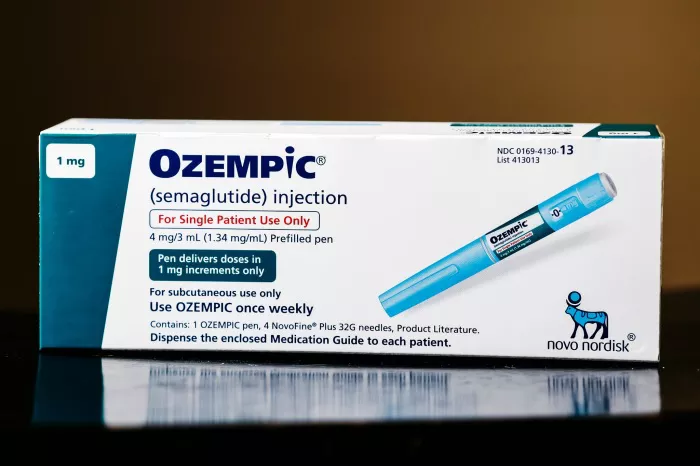In the intricate tapestry of allergies, wheat allergy stands as a distinct thread, weaving its way through the lives of individuals who grapple with adverse reactions to this ubiquitous grain. Characterized by an immune system hypersensitivity to proteins found in wheat, this allergy can manifest in a range of symptoms, from mild discomfort to severe and potentially life-threatening reactions. This comprehensive guide aims to unravel the complexities of wheat allergy, exploring its origins, common symptoms, diagnostic methods, and strategies for effective management.
Defining Wheat Allergy
Wheat Allergy at a Glance: Wheat allergy is an immune system response to proteins found in wheat. Unlike celiac disease, which is an autoimmune condition triggered by gluten, wheat allergy involves an allergic reaction to various proteins present in wheat. The immune system identifies these proteins as harmful invaders, prompting the release of histamines and other chemicals that cause allergic symptoms.
Proteins Triggering Allergic Responses: Several proteins in wheat can trigger allergic reactions. These include but are not limited to:
Albumin
Globulin
Gliadin
Glutenins
These proteins can be found in various wheat-based products, posing challenges for individuals with wheat allergy to navigate a multitude of food items.
Bold Steps into Diagnosis
Symptoms of Wheat Allergy: A Varied Spectrum: Wheat allergy can manifest with a diverse array of symptoms, ranging from mild to severe. Common symptoms include:
Skin Reactions: Hives, eczema, or general itching.
Gastrointestinal Distress: Abdominal pain, cramps, nausea, vomiting, or diarrhea.
Respiratory Symptoms: Sneezing, runny nose, nasal congestion, wheezing, or asthma-like symptoms.
Anaphylaxis: In severe cases, wheat allergy can lead to anaphylaxis, a life-threatening reaction that requires immediate medical attention. Symptoms of anaphylaxis include difficulty breathing, a drop in blood pressure, and loss of consciousness.
Diagnostic Approaches
Medical History and Symptom Analysis: The diagnostic journey for wheat allergy often begins with a detailed medical history and analysis of symptoms. A healthcare professional will inquire about the nature and timing of allergic reactions, potential triggers, and the severity of symptoms.
Skin Prick Test: A Pioneering Diagnostic Tool: Skin prick tests involve applying a small amount of allergen extract, including wheat proteins, to the skin. A tiny needle is then used to prick the skin beneath the drop, allowing the allergen to enter. If an individual is allergic to wheat, a small raised bump or hive will develop at the test site.
Blood Tests: Detecting Allergen-Specific IgE: Blood tests measure the levels of specific antibodies, known as immunoglobulin E (IgE), produced in response to wheat proteins. Elevated levels of wheat-specific IgE indicate sensitization to wheat allergens, providing valuable diagnostic insights.
Oral Food Challenges: Confirming Allergic Reactions: In some cases, oral food challenges may be conducted under the supervision of medical professionals. Small amounts of wheat-containing foods are ingested in a controlled environment, and the individual is closely monitored for any adverse reactions.
Navigating Life with Wheat Allergy
Strict Allergen Avoidance: The Cornerstone of Management: The primary and most effective strategy for managing wheat allergy is strict avoidance of wheat and wheat-containing products. This requires vigilant label reading, clear communication with food service providers, and a comprehensive understanding of alternative grains and flours.
Hidden Sources of Wheat: Unmasking Culprits in Disguise: Wheat can be present in unexpected places, making it crucial for individuals with wheat allergy to be aware of hidden sources. Some common hidden sources include:
Soy sauce
Processed meats
Sauces and gravies
Baked goods
Ice cream cones
Thorough ingredient scrutiny is essential to uncover these hidden wheat reservoirs.
Alternative Grains and Flours: Embracing Diversity: Individuals with wheat allergy can still enjoy a varied and nutritious diet by exploring alternative grains and flours. Quinoa, rice, corn, buckwheat, and amaranth are examples of gluten-free grains that can serve as substitutes for wheat in various recipes.
Diligent Label Reading: Navigating the Supermarket Aisles: The supermarket becomes a terrain of careful exploration for those with wheat allergy. Reading food labels diligently, searching for wheat-derived ingredients such as wheat starch, semolina, and durum, becomes a habitual practice.
Communication with Food Service Providers: Dining Out with Confidence: Dining out poses unique challenges for individuals with wheat allergy, but clear communication with food service providers can mitigate risks. Informing restaurant staff about the allergy, discussing specific dietary needs, and confirming ingredient lists are crucial steps in ensuring a safe dining experience.
Educating Those Around You: Building a Supportive Network: Educating friends, family, coworkers, and others in your social circle about wheat allergy fosters a supportive environment. Clear communication about the severity of the allergy and the importance of avoiding cross-contamination contributes to a safer and more inclusive community.
Emergency Preparedness: The Role of Epinephrine: For individuals with a history of severe allergic reactions or anaphylaxis, having an epinephrine auto-injector on hand is imperative. Prompt administration of epinephrine can counteract the potentially life-threatening effects of an allergic reaction and is a critical component of emergency preparedness.
Navigating Wheat Allergy in Specific Contexts:
Wheat Allergy in Children: A Nuanced Approach: Managing wheat allergy in children requires a nuanced approach, especially considering the challenges presented by school environments, social events, and the developmental stages of childhood. Collaboration with school staff, proactive communication, and education about safe snacks are key elements in ensuring the well-being of children with wheat allergy.
Wheat Allergy and Celiac Disease: Distinct Entities: It’s essential to distinguish between wheat allergy and celiac disease, as these are distinct entities with different immune system responses. Celiac disease is an autoimmune condition triggered by gluten, a protein found in wheat, rye, and barley. While wheat allergy involves an allergic reaction to various proteins in wheat, celiac disease is characterized by an autoimmune response specifically to gluten.
Potential Outgrowing of Wheat Allergy: A Ray of Hope: In some cases, children with wheat allergy may outgrow their sensitivity over time. Regular follow-up with healthcare professionals, including repeat testing, can help monitor changes in allergic status and guide decisions about the gradual reintroduction of wheat-containing foods.
Final Thoughts
In conclusion, understanding and managing wheat allergy involve a multifaceted approach that encompasses accurate diagnosis, vigilant allergen avoidance, and effective communication with healthcare professionals and the broader community. By embracing alternative grains, fostering a supportive network, and maintaining emergency preparedness, individuals with wheat allergy can navigate the complexities of daily life with confidence. May this guide serve as a beacon of knowledge, empowering individuals to unravel the grain puzzle and embark on a journey toward a life beyond the confines of wheat allergy.
[inline_related_posts title=”You Might Be Interested In” title_align=”left” style=”list” number=”6″ align=”none” ids=”3418,3416,3449″ by=”categories” orderby=”rand” order=”DESC” hide_thumb=”no” thumb_right=”no” views=”no” date=”yes” grid_columns=”2″ post_type=”” tax=””]
































